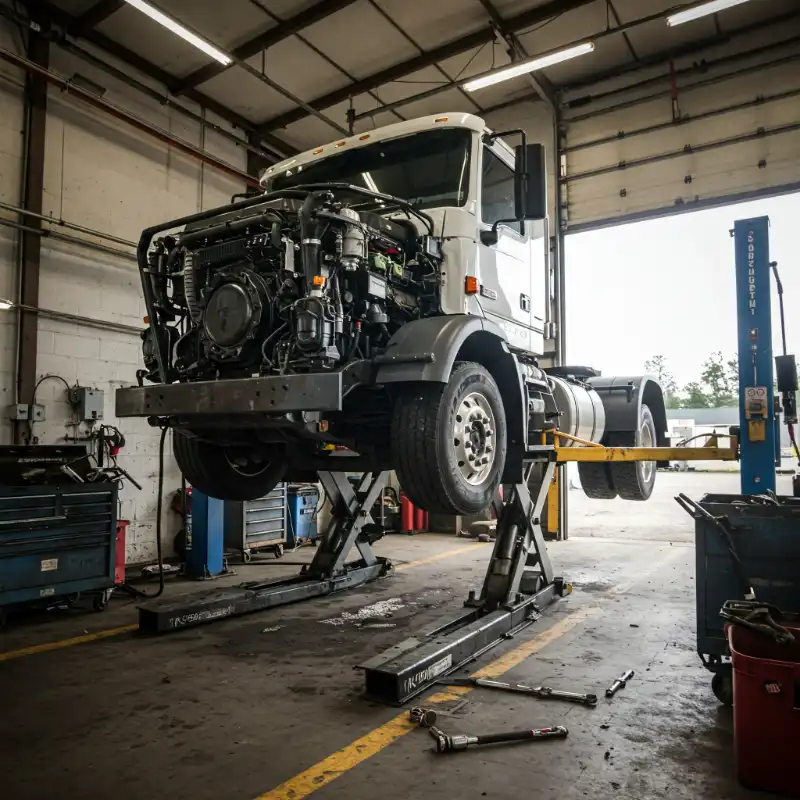Proper tire care can significantly reduce operating costs, improve fuel efficiency, and enhance road safety. This guide covers essential tire maintenance tips, including regular tire inspections, proper tire pressure, tire rotation and alignment, and tire balancing. By following these tips, you can ensure that your fleet remains in optimal condition.
Regular Tire Inspections
Visual and Tactile Inspections
Daily Checks: Performing daily walk-around inspections is a simple yet effective way to detect signs of damage or wear. Look for cuts, punctures, cracks, and bulges. These quick checks can prevent potential blowouts or tire failures on the road.
Monthly Inspections: A more thorough inspection should be conducted at least once a month. This involves closely examining each tire for deeper issues that might take time to be visible. Use a flashlight to check for hidden cuts, punctures, and embedded objects.
Professional Inspections: In addition to self-inspections, schedule regular professional inspections. Trained technicians can identify subtle issues and perform necessary repairs or replacements before they become major problems. Professional inspections should be part of your routine maintenance schedule.
Tread Depth and Wear Patterns
Tread Depth: Tread depth is a critical factor in tire performance, particularly in adverse weather conditions. Use a tread depth gauge to measure the depth of the tread grooves. The minimum legal tread depth for heavy-duty vehicles is typically 4/32 of an inch on steer tires and 2/32 of an inch on all other tires. Adequate tread depth ensures proper traction and reduces the risk of hydroplaning.
Wear Patterns: Uneven wear patterns can indicate underlying issues such as improper inflation, misalignment, or mechanical problems. For example, feathered wear suggests misalignment, while cupping could indicate suspension issues. Regularly monitor wear patterns and address the root causes to prevent premature tire wear.
Maintaining Proper Tire Pressure
Importance of Correct Inflation
Safety and Performance: Maintaining the correct tire pressure is essential for safety and performance. Properly inflated tires ensure optimal contact with the road, providing better handling and braking performance. According to the National Highway Traffic Safety Administration (NHTSA), under-inflated tires are three times more likely to be involved in a crash than properly inflated ones.
Avoiding Under- and Over-Inflation: Both under-inflation and over-inflation can cause significant problems. Under-inflated tires generate more heat due to increased friction, leading to premature wear and a higher risk of blowouts. Over-inflated tires, on the other hand, can cause uneven tread wear and reduce the tire's contact patch, compromising traction and handling.
Monitoring and Adjusting Tire Pressure
Using a Tire Pressure Monitoring System (TPMS): TPMS provides real-time monitoring of tire pressure, alerting drivers to any deviations from the recommended levels. This technology helps maintain proper tire pressure, reducing the risk of tire failure and improving fuel efficiency. Implementing TPMS across your fleet can be a cost-effective measure to enhance safety and performance.
Manual Checks: In addition to TPMS, manual pressure checks should be performed regularly using a reliable gauge. This is particularly important for heavy-duty vehicles that carry varying loads, as tire pressure needs to be adjusted accordingly. Conduct these checks before long trips or when there are significant changes in load weight.
Adjusting Pressure: Follow the manufacturer's guidelines for tire pressure based on the vehicle's load and operating conditions. According to the U.S. Department of Energy, underinflated tires can decrease fuel efficiency by up to 3%.
Tire Rotation and Alignment
Benefits of Regular Rotation
Extended Tire Life: Regular tire rotation promotes even wear, extending the life of your tires. For heavy-duty vehicles, it's recommended to rotate tires every 6,000 to 8,000 miles. This helps distribute wear more evenly across all tires, preventing any single tire from wearing out prematurely.
Manufacturer Recommendations: Always follow the vehicle manufacturer's recommendations for tire rotation patterns and intervals. These guidelines are designed to optimize tire performance and longevity based on the vehicle's specific characteristics.
Ensuring Proper Alignment
Alignment Checks: Proper alignment is crucial for even tire wear and optimal vehicle handling. Misaligned wheels can cause uneven tire wear, reducing tire life and compromising safety. Schedule regular alignment checks, especially after hitting potholes or curbs, which can knock wheels out of alignment.
Symptoms of Misalignment: Common signs of misalignment include the vehicle pulling to one side, uneven tire wear, and steering wheel vibration. If you notice any of these symptoms, have your vehicle inspected and aligned by a professional technician. Correcting alignment issues can save you from costly tire replacements and improve overall vehicle performance.
Balancing Tires
Importance of Balanced Tires
Smooth Ride: Balanced tires are essential for a smooth and comfortable ride. Imbalanced tires can cause vibrations, which not only make driving uncomfortable but also lead to uneven tire wear and strain on suspension components. Ensuring your tires are balanced reduces these vibrations and enhances overall driving comfort.
Fuel Efficiency: Balanced tires also contribute to improved fuel efficiency. Unbalanced tires create additional resistance, forcing the engine to work harder and consume more fuel.
Methods of Balancing
Static and Dynamic Balancing: There are two main methods of balancing tires: static and dynamic. Static balancing addresses vertical imbalance, using weights to counterbalance the heaviest part of the tire. Dynamic balancing, on the other hand, corrects both vertical and lateral imbalances, using a combination of weights and positioning adjustments. Dynamic balancing is generally more comprehensive and suitable for heavy-duty vehicles.
Professional Services: It's essential to have your tires balanced by a professional using the appropriate equipment. Professionals can accurately diagnose and correct imbalances, ensuring your tires perform optimally. Regular balancing should be part of your maintenance routine, especially when installing new tires or after repairs.
Keep Those Tires Rolling!
Regular inspections, maintaining correct tire pressure, proper rotation and alignment, and balancing are critical practices that can significantly reduce operational costs and enhance vehicle performance. By following these tips, you can ensure that your fleet operates smoothly and safely.










.webp)





























